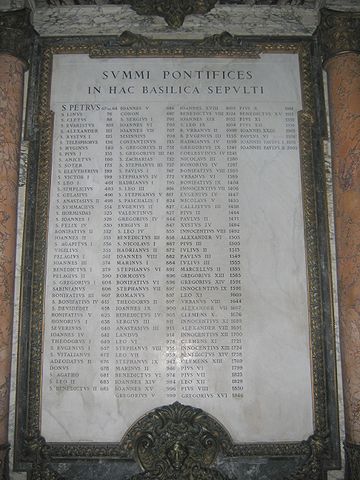Cross Examination

In January of 897, Pope Formosus was put on trial. He was tried for various violations of papal law, including serving as a bishop while actually a layperson. During the trial, he sat, propped up on a throne, silent and motionless. And when he was convicted, he remained stoic.
In most cases, defendants on trial have trouble controlling their emotions. But for Formosus, this was easy. He was dead, and had been for about eight months.
The 9th and early 10th centuries were a difficult time for the papacy; Wikipedia calls it “a period of political instability in Italy.” For the century beginning with the death of Pope John II in 882, nearly twenty different men ascended to the title of Pope. Some, like Formosus, lasted five years — but really, five years as Pope was a long time during the era. His successor, Boniface VI, only lasted a few weeks, and four different men would be Pope in the year 897 alone. One of them, Pope Stephen VI, is responsible for putting the corpse of Pope Formosus on trial, in an event now called the Cadaver Synod.
The exact reasons behind the trial are not entirely clear, as historical sources from that era are few and far between. Most likely, the Synod was politically driven. Formosus tried to install new leadership in the Holy Roman Empire which some previous and subsequent Popes objected to. But in any event, Formosus’ body was exhumed (despite the fact that it was, by then, somewhat noticeably decomposed), propped up on a throne, and a deacon was assigned to defend him. That defense, of course, failed, especially in light of the fact that the accused was long departed (although when the Pope puts you on trial, whether you are alive or dead may not matter all that much). Per one historian, Formosus’s punishment cost him all of his acts as Pope — they were reversed — and the three fingers he used for consecrations, which were cut off.
Eventually, Formosus’s body was thrown into the Tiber River, never to be thought of again. But the rumor mill took over, and many disapproved of Stephen VI’s decision to try the deceased. Subsequent Popes overturned the Synod, and Formosus was reburied in St. Peter’s Basilica.
Bonus fact: According to Wikipedia, it was once traditional to gently tap a recently-deceased pontiff on the head with a silver hammer, three times, in order to ensure that he had, indeed, passed. (This was not done following the deaths of the most recent two Popes.)
From the Archives: The Scientist Pope: A Pope who was also the leading scientific mind of his time.
Related: “The Catholic Church Through the Ages: A History” by John Vidmar. 4.5 stars on 26 reviews.

Leave a comment